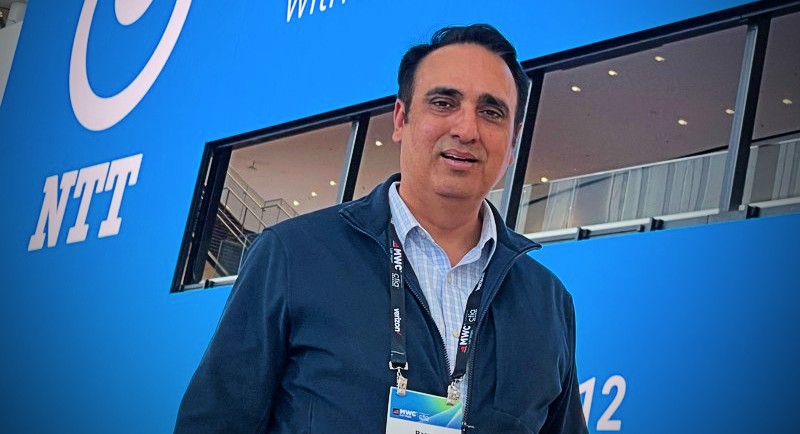Speaking with system integrator NTT this week for an upcoming editorial report about how to allocate critical Industry 4.0 workloads, certain well-understood drivers to move computing and connectivity systems away from centralised cloud and network infrastructure onto enterprise premises were, again, made clear. The logic is plain, the discussion said; edge-based requirements are most often dictated by application performance, where latency and reliability are the king measures, or else by security and privacy requirements (and industrial distrust in public infrastructure).
But something else came up, as well, which is just as clear, but harder to pin down: the challenge of data management. This aspect of the Industry 4.0 edge-drive splits a couple of ways, along compute and connectivity lines: certain new industrial IoT solutions, especially camera-based sensor applications, would simply fall-over if their payloads had to traverse the open internet, or channels of it, in order to be transmogrified into useful information; and certain of them would also knock-out legacy enterprise networks if they were not rerouted on local-edge cellular.
Parm Sandhu, vice president of enterprise 5G products and services at NTT, explains: “When you start getting into computer vision type applications, there’s lots of data – especially in a large plant that might have thousands of sensors and cameras. There is so much data that the backhaul wide-area network links to the cloud would be overwhelmed, and the cost to upgrade them could be very high. Which is another reason to process data locally – just that the volume of data would add significant cost to centralising [compute functions].”

Responding directly to a question about the relevance of private 5G to such critical high-end IoT applications as computer vision, Sandhu responded that a judgement call has to be made. “It depends on the application, and the state of the customer’s Wi-Fi network,” he says. “The LAN inside the plant might already be congested; they might not want to put any additional burden on it. And so there might be a case to upgrade [to private cellular] to support all of these heavy-bandwidth new services and applications like computer vision.”
He adds: “I mean, those cameras – especially if you’re constantly transmitting – could consume almost the entirety of your LAN. Wi-Fi doesn’t have quality-of-service (QoS) either, which certain applications need. It really is use-case driven, and dependent also on the state of existing connectivity. Sometimes you have to modernise, and sometimes Wi-Fi is just fine.” The message from NTT – so obvious it should not have to be said, let alone written; and painfully significant, perhaps, that it is – is that the solution has to fit the problem.
“Clients want outcomes, not technologies; you can’t just sell some edge-compute hardware and say, ‘there, off you go’,” remarks Sandhu. Outcomes can be any and all of these aspects, in any combination, as listed at the top: efficiency, productivity, sustainability, security, privacy. And they can be architected in the name of industrial automation, or predictive maintenance, or data sovereignty, and so on. But, again, the talk about management of critical industrial data is most interesting, perhaps.
Sandhu notes that the great challenge for Industry 4.0 is how to manage the digital chaos, as data comes at enterprises in all directions. “Data is not really contextualised or aggregated across disparate systems. They are all monitoring all different parts of the plant, with different sensors and different devices. It is supposed to be optimised to work together. But all the data comes in through different pipes and sits separately. There is no way to consider all of it together, in one place,” he says. Which gets into discussion about IoT management platforms, and digital twins.
But the impossible logistics of carrying massive volumes of IoT and OT data into the cloud means that local edge computing engines have to be engaged first. NTT is running Azure and VMWare cloud capabilities on its edge hardware service, being offered as a managed solution in tandem with edge-based private-cellular connectivity and IoT sensing applications. The point, of course, is that Industry 4.0 makes the edge crucial; it would not work in its absence. The case for private (edge) 5G is more nuanced.
But the cloud is also useful, and invariably factored into hybrid compute solutions. Sandu gives the example of a worker safety application, where staff are pulled-up on a camera vision application for not wearing, or wrongly-wearing, personal protective equipment (PPE). He says: “You don’t want to send all that video up to the cloud; the processing has to be done locally, and then, as soon as you detect any irregularities, you generate an alert [via the cloud] to the dashboard management system – which can immediately trigger an alarm.”
For more on this topic, tune in to the upcoming webinar on Critical 5G Edge Workloads on September 27 — with ABI Research, Kyndryl, Southern California Edison, and Volt Active Data.
All entries in the Postcards from the Edge series are available below.
Postcards from the edge | Compute is critical, 5G is useful (sometimes) – says NTT
Postcards from the edge | Cloud is (quite) secure, edge is not (always) – says Factry
Postcards from the edge | Rules-of-thumb for critical Industry 4.0 workloads – by Kyndryl
Postcards from the edge | No single recipe for Industry 4.0 success – says PwC
Postcards from the edge | Ultra (‘six nines’) reliability – and why it’s madness (Reader Forum)
Postcards from the edge | Private 5G is reshaping the Industry 4.0 edge, says Nokia

